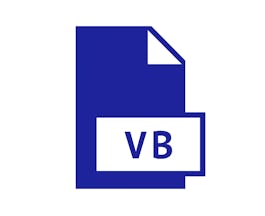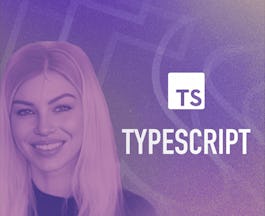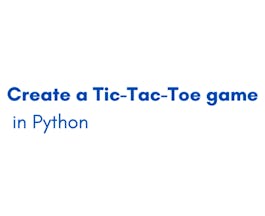Filter by
The language used throughout the course, in both instruction and assessments.
Explore the User interface (UI) Course Catalog

LearnQuest
Skills you'll gain: Java, Application Servers, Web Applications, Development Environment, Java Programming, Application Development, Mobile Development, Computer Programming, UI Components, Event-Driven Programming, User Interface (UI), Command-Line Interface

LearnQuest
Skills you'll gain: Visual Basic (Programming Language), Development Environment, Program Development, Microsoft Development Tools, Programming Principles, .NET Framework, Computer Programming, Integrated Development Environments, Data Entry, Application Development, User Interface (UI), Business Logic, Computational Logic, Cross Platform Development, Command-Line Interface, Debugging

Skills you'll gain: Android Studio, Android Development, Mobile Development, Android (Operating System), Gradle, Kotlin, Application Development, Development Environment, Java, User Interface (UI), Extensible Markup Language (XML)

Scrimba
Skills you'll gain: TypeScript, File Management, Data Structures, Javascript, Software Design, Programming Principles, Application Development, User Interface (UI), Cascading Style Sheets (CSS), Web Development Tools, Object Oriented Programming (OOP)

EDUCBA
Skills you'll gain: Technical Drawing, Engineering Drawings, Computer Aided Three-Dimensional Interactive Application (CATIA), Assembly Drawing, 3D Modeling, Mechanical Design, Drafting and Engineering Design, Computer-Aided Design, Visualization (Computer Graphics), Geometric Dimensioning And Tolerancing, File Management, Interoperability, User Interface (UI)

Coursera Project Network
Skills you'll gain: Cross Platform Development, Event-Driven Programming, Computer Graphics, Computer Graphic Techniques, Python Programming, Application Development, User Interface (UI), Computer Programming

Scrimba
Skills you'll gain: React Redux, React.js, Cascading Style Sheets (CSS), UI Components, JavaScript Frameworks, Network Routing, Front-End Web Development, User Interface (UI) Design, Web Development Tools, Maintainability, Authentications, Javascript, Authorization (Computing), Software Design, User Interface (UI), Web Applications, Application Programming Interface (API), Performance Tuning, Business Logic

Skills you'll gain: Security Information and Event Management (SIEM), Splunk, Threat Detection, System Monitoring, Cybersecurity, Event Monitoring, Continuous Monitoring, Incident Response, Data Analysis Software, Data Management, Data Storage, Software Installation, Query Languages, User Interface (UI)

Skills you'll gain: User Experience Design, User Centered Design, Interaction Design, User Interface and User Experience (UI/UX) Design, Usability, Human Computer Interaction, User Flows, Web Content Accessibility Guidelines, UI Components, Apple iOS, Wireframing, Design Elements And Principles, Persona Development

L&T EduTech
Skills you'll gain: Autodesk Revit, Building Information Modeling, Engineering Documentation, Architectural Design, 3D Modeling, Facility Management, Civil Engineering, Structural Engineering, Technical Standard, HVAC, Plumbing, User Interface (UI)

Skills you'll gain: React Redux, Node.JS, Application Deployment, React.js, Bootstrap (Front-End Framework), Server Side, UI Components, Back-End Web Development, Continuous Deployment, Responsive Web Design, User Accounts, Authentications, Data Validation, MongoDB, Web Applications, JavaScript Frameworks, Front-End Web Development, User Interface (UI), Restful API, HTML and CSS

LearnQuest
Skills you'll gain: Angular, JavaScript Frameworks, Model View Controller, Application Deployment, Cascading Style Sheets (CSS), TypeScript, UI Components, Application Frameworks, Web Development Tools, Server Side, User Interface (UI), Front-End Web Development, Hypertext Markup Language (HTML), Restful API, Web Applications, Application Programming Interface (API), Data Mapping, Network Routing, Javascript, Software Architecture
Searches related to ui
In summary, here are 10 of our most popular ui courses
- Writing Java Application Code: LearnQuest
- Introduction to Visual Basic Programming: LearnQuest
- Introducción al desarrollo de apps móviles para Android: Meta
- Build a TypeScript Project: Scrimba
- Introduction to CATIA V5: EDUCBA
- Create a Tic-Tac-Toe game in Python: Coursera Project Network
- Advanced React Skills: Scrimba
- Introduction to SIEM (Splunk): EDUCBA
- UX: Interaction Design: Packt
- BIM Fundamentals for Engineers: L&T EduTech










